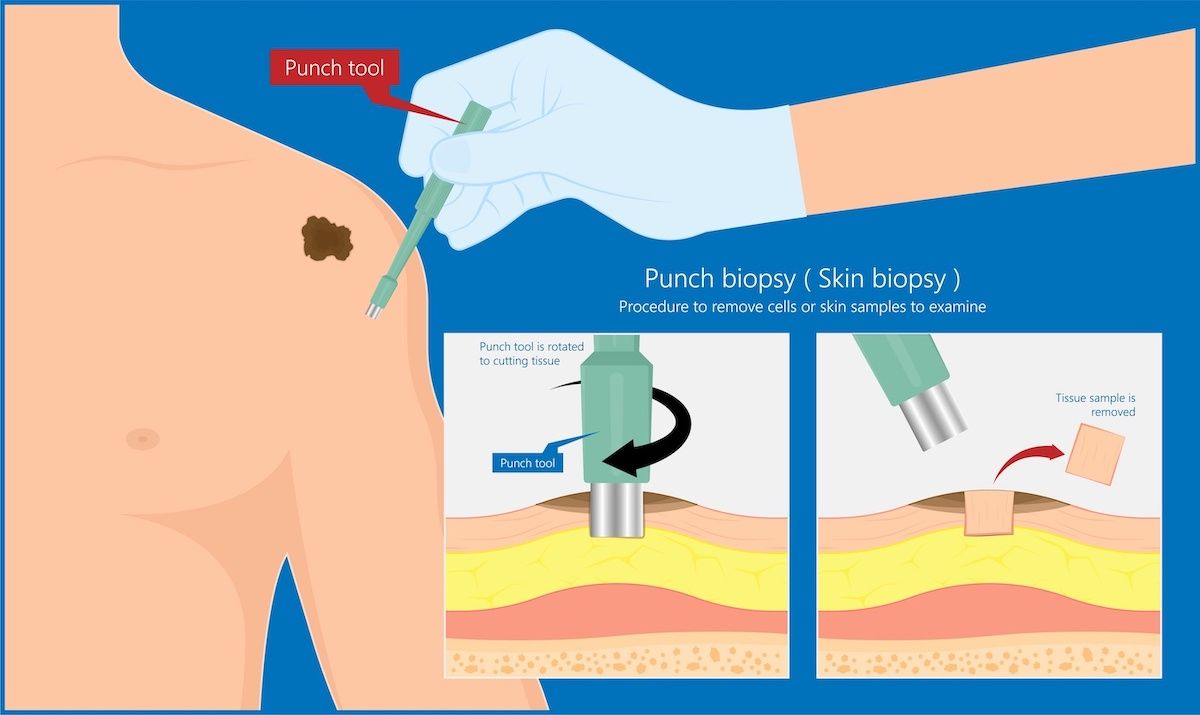A biopsy punch is a specialized medical instrument used to extract a small, cylindrical sample of tissue from the skin for diagnostic purposes. This procedure, known as a punch biopsy, is commonly employed to diagnose various skin conditions, including infections, inflammatory diseases, and skin cancers.
Design and Functionality
The biopsy punch features a circular blade attached to a pencil-like handle. When pressed and rotated against the skin, it removes a core of tissue encompassing the epidermis, dermis, and superficial fat layers. This full-thickness sample is essential for accurate histological examination.
Procedure Overview
Anesthesia: The area to be biopsied is cleansed and numbed using a local anesthetic to minimize discomfort.
Tissue Extraction: The clinician stretches the skin and positions the biopsy punch perpendicular to the surface. Using a gentle twisting motion, the instrument is advanced through the skin layers to obtain the tissue sample.
Handling the Sample: The extracted tissue is carefully lifted, typically with a needle, to prevent damage, and then preserved for laboratory analysis.
Wound Care: Depending on the size of the biopsy site, the wound may be closed with sutures or left to heal naturally. Proper aftercare instructions are provided to the patient to ensure optimal healing.
Advantages of Punch Biopsy
Diagnostic Accuracy: By obtaining a full-thickness skin sample, punch biopsies allow for comprehensive histologic examination, facilitating accurate diagnosis of various dermatologic conditions.
Minimally Invasive: The procedure is relatively simple, quick, and can often be performed in an outpatient setting under local anesthesia.
Versatility: Punch biopsies are suitable for evaluating a wide range of skin lesions and conditions, making them a valuable tool in dermatology.

Considerations and Potential Complications
While generally safe, punch biopsies carry potential risks, including bleeding, infection, scarring, and nerve damage. It’s crucial for healthcare providers to discuss these risks with patients and provide clear post-procedure care instructions to mitigate complications.
Conclusion
The biopsy punch is an indispensable tool in dermatological diagnostics, enabling healthcare professionals to obtain tissue samples necessary for accurate diagnosis and treatment planning. Its design and functionality make it a preferred choice for evaluating various skin conditions, underscoring its significance in clinical practice.